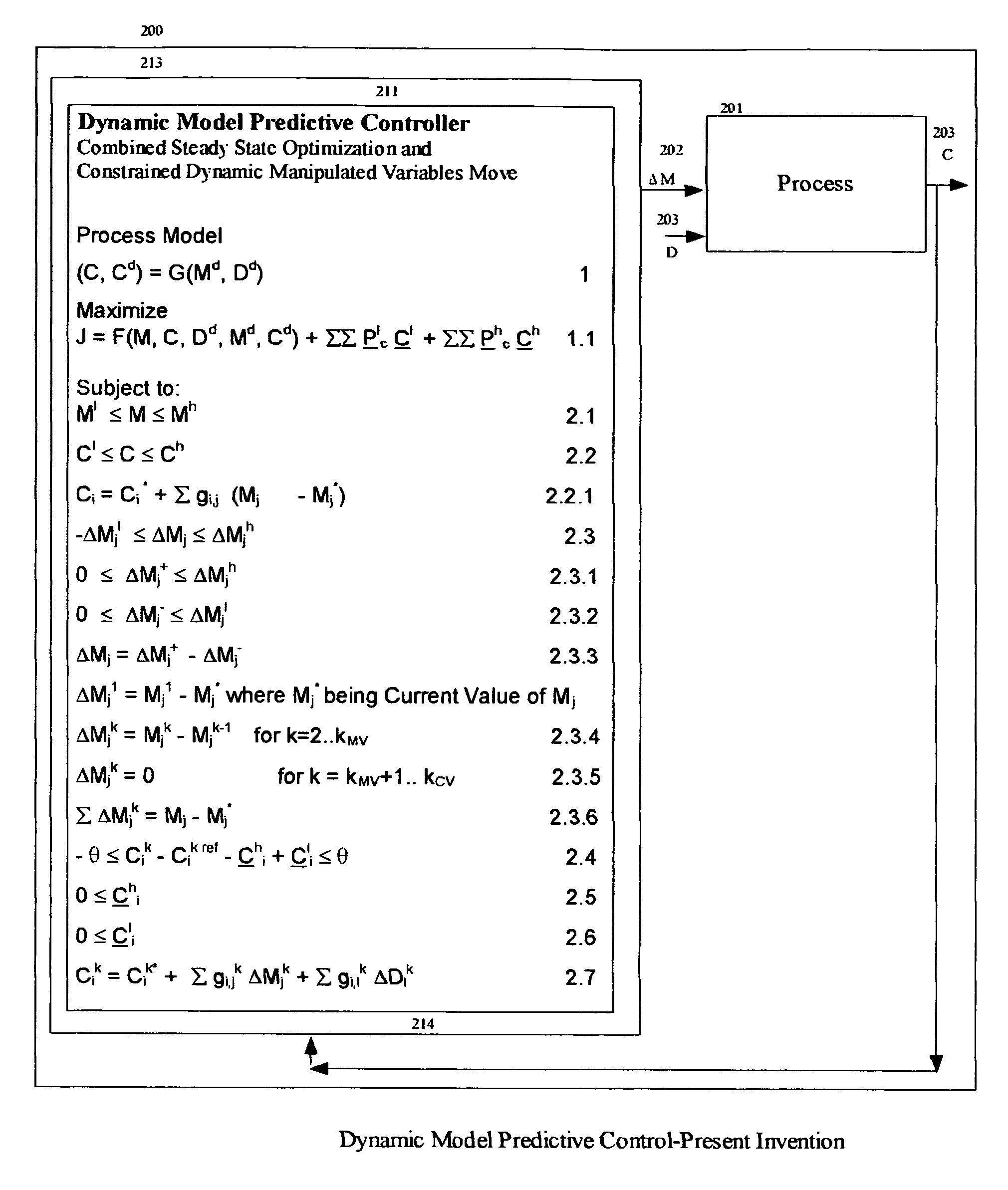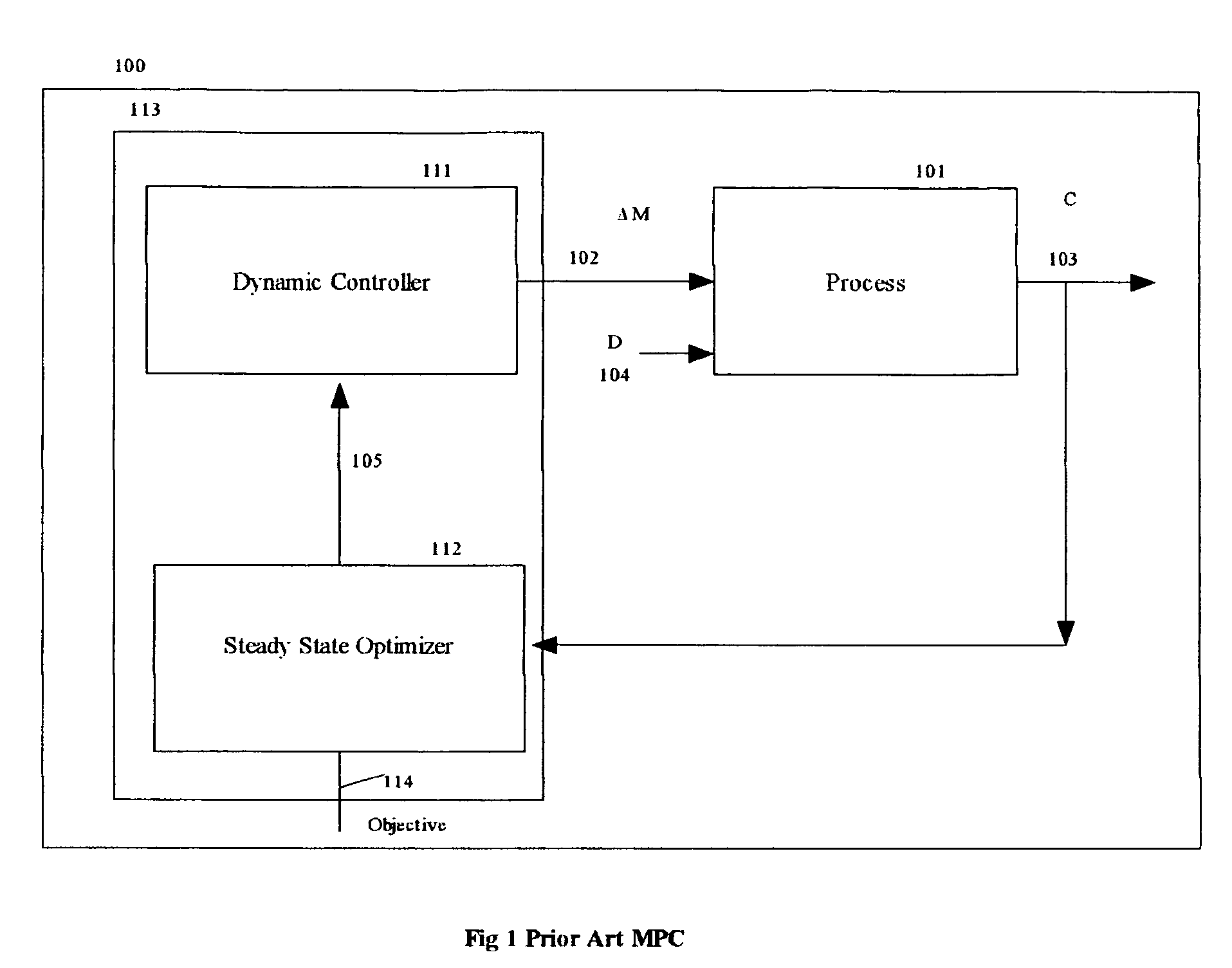Dynamic model predictive control
a dynamic model and predictive control technology, applied in adaptive control, digital computers, instruments, etc., can solve the problems of unconstrained solution not being guaranteed, dynamic performance of mpc can drastically change under changing process condition circumstances, and the value of controlled variables can violate their high/low limits, etc., to achieve improved and robust control performance
- Summary
- Abstract
- Description
- Claims
- Application Information
AI Technical Summary
Benefits of technology
Problems solved by technology
Method used
Image
Examples
Embodiment Construction
[0021]In FIG. 1, a block diagram illustrating the two-step prior art MPC process control is shown. The process 201 is characterized by a number of what is generally known as controlled variables (process output variables) 203, manipulated variables (process input variables) 202 and disturbance variables (process uncontrolled input variables) 204. The process relate to any form of operation in which the effects of changes in the manipulated variables and the disturbance variables produce some changes in the controlled variables over a period of time. Typically, the changes in the controlled variables settle down to a constant value or near constant value including at a constant rate of change is generally known as steady state. A steady state represents final state of the process following the changes in the manipulated variables and / or the disturbance variables. For a stable process, the steady state is achieved when the rate of change of its output variables becomes zero for inhere...
PUM
 Login to View More
Login to View More Abstract
Description
Claims
Application Information
 Login to View More
Login to View More - R&D
- Intellectual Property
- Life Sciences
- Materials
- Tech Scout
- Unparalleled Data Quality
- Higher Quality Content
- 60% Fewer Hallucinations
Browse by: Latest US Patents, China's latest patents, Technical Efficacy Thesaurus, Application Domain, Technology Topic, Popular Technical Reports.
© 2025 PatSnap. All rights reserved.Legal|Privacy policy|Modern Slavery Act Transparency Statement|Sitemap|About US| Contact US: help@patsnap.com



